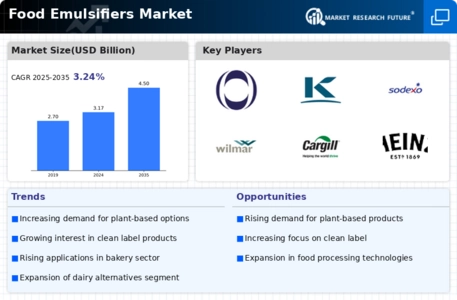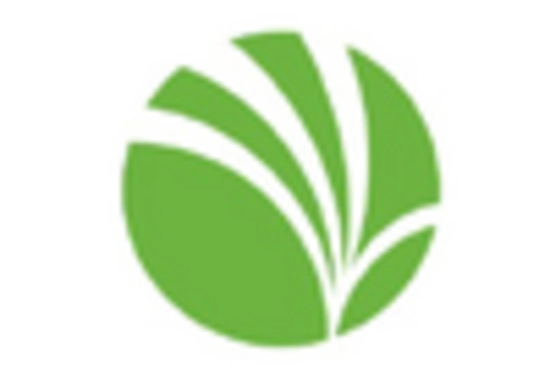Health and Wellness Trends
The growing focus on health and wellness among consumers is influencing the Food Emulsifiers Market. As individuals become more health-conscious, there is a noticeable shift towards products that are perceived as healthier, including those with reduced fat and sugar content. Emulsifiers are increasingly being utilized to improve the mouthfeel and texture of these healthier alternatives without compromising taste. Market data suggests that the demand for low-fat and sugar-free products is on the rise, which in turn drives the need for effective emulsifiers. This trend indicates that the Food Emulsifiers Market may experience growth as manufacturers seek to innovate and reformulate products to meet consumer preferences for healthier options.
Rising Demand for Processed Foods
The increasing demand for processed foods is a primary driver of the Food Emulsifiers Market. As consumers seek convenience and longer shelf life, manufacturers are incorporating emulsifiers to enhance texture and stability. According to recent data, the processed food sector is projected to grow at a compound annual growth rate of approximately 4.5% over the next few years. This trend indicates a robust market for food emulsifiers, as they play a crucial role in maintaining product quality and consistency. The Food Emulsifiers Market is likely to benefit from this shift, as emulsifiers are essential in various applications, including sauces, dressings, and baked goods. Consequently, the demand for emulsifiers is expected to rise in tandem with the processed food market, creating opportunities for manufacturers and suppliers alike.
Regulatory Support for Food Safety
Regulatory support for food safety is a critical driver for the Food Emulsifiers Market. Governments and regulatory bodies are increasingly emphasizing the importance of food safety standards, which necessitates the use of approved emulsifiers in food products. This regulatory framework not only ensures consumer safety but also encourages manufacturers to adopt high-quality emulsifiers that comply with safety regulations. As a result, the demand for food emulsifiers that meet these stringent standards is likely to increase. The Food Emulsifiers Market may see growth as companies invest in compliant emulsifiers to enhance their product offerings and maintain consumer trust. This regulatory environment fosters a competitive landscape where quality and safety are paramount.
Expansion of the Bakery and Confectionery Sector
The expansion of the bakery and confectionery sector is a significant driver of the Food Emulsifiers Market. As consumer preferences shift towards baked goods and sweets, the demand for emulsifiers that improve texture, volume, and shelf life is on the rise. Market analysis indicates that the bakery segment is expected to witness substantial growth, with a projected increase in demand for emulsifiers that enhance product quality. Emulsifiers play a vital role in stabilizing emulsions and improving the overall sensory experience of baked products. Consequently, the Food Emulsifiers Market is likely to benefit from this trend, as manufacturers seek to innovate and meet the evolving tastes of consumers in the bakery and confectionery segments.
Technological Advancements in Emulsifier Production
Technological advancements in the production of food emulsifiers are significantly impacting the Food Emulsifiers Market. Innovations in extraction and processing techniques have led to the development of more efficient and cost-effective emulsifiers. For instance, the introduction of enzyme-based emulsifiers has shown promise in enhancing product stability and performance. Furthermore, advancements in formulation technology allow for the creation of customized emulsifiers tailored to specific applications. This evolution in production methods is likely to drive market growth, as manufacturers are able to offer a wider range of products that meet diverse consumer needs. The Food Emulsifiers Market stands to gain from these technological improvements, which may enhance product quality and expand application areas.


















Leave a Comment